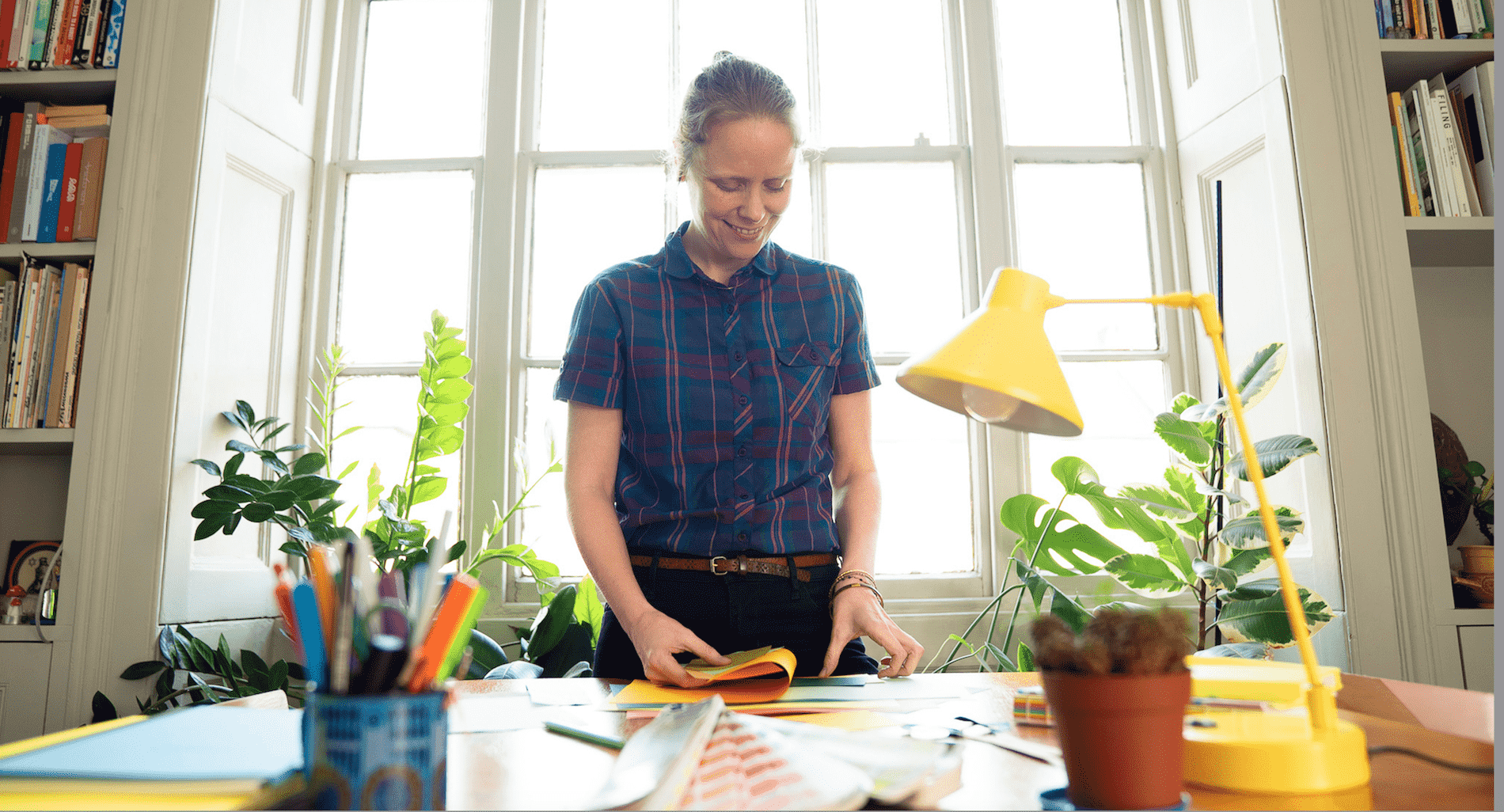Emmi is the Founder and Creative Director of Studio Emmi and a certified Happiness Facilitator. Her output is underpinned by a simple but powerful idea: Positive Creativity. From the creative process to the final output, she believes design can bring people together, create sustainable choices and foster well-being.
Emmi has created a model, Creative Ecosystem, to support fellow creative thinkers with wisdom, new ideas and enriching tactics to help prevent burnout, reduce stress and support a more fulfilling creative practice.
The Impact of Stress on the Creative Industries
As creatives, we are often driven by our passion for our work and find fulfillment and energy in the creative process. When we get commissioned to design an exciting project, we are consumed by finding the best way to express the character and mission of the client’s business.
Working in the creative industries can be challenging, however, as research in the UK (Northern Ireland) by wellbeing charity Inspire and Ulster University has found. Individuals employed in the creative sectors encounter high levels of pressure and are almost three times more likely to suffer from stress and burnout than the general population.
As someone who has experienced and witnessed these challenges firsthand, I have made it my mission to find ways to tackle stress and burnout in the everyday. When creating visual identities, I believe one way of doing this is by bridging the gap between external designers and in-house designers through collaboration. Collaboration can positively impact the well-being of all involved, as well as foster the sustained success of the project.

Joint Upskilling and Visual Identity Creation
External designers are often hired to create a visual identity for their specialized expertise in the field. This means they run the project independently, then hand it over to the in-house designer in the form of identity guidelines for them to implement and put into practice. However, working together from the start can create a synergy where the independent designer can act as a mentor, upskilling and guiding the in-house designer, while the in-house designer has an opportunity to bring their own unique experience and wisdom to the table.
We recently launched a new identity for Centre for London, an independent think tank, dedicated to researching the city’s critical issues. They bring together London’s citizens, experts and leaders to discuss, develop and implement the policy solutions to tackle them. With its new look, Centre for London aims to be “a voice for all London is and could be”.
As well as in its presentation to external audiences, Centre for London’s redesign also stressed the importance of participation and inclusion from an internal perspective. This was achieved via a hybrid model of working in which I had the opportunity to mentor and collaborate with the think tank’s own in-house Senior Designer, Klara Blazek. The Centre chose to prioritize joint upskilling alongside rebranding in spite of limited financial resources.
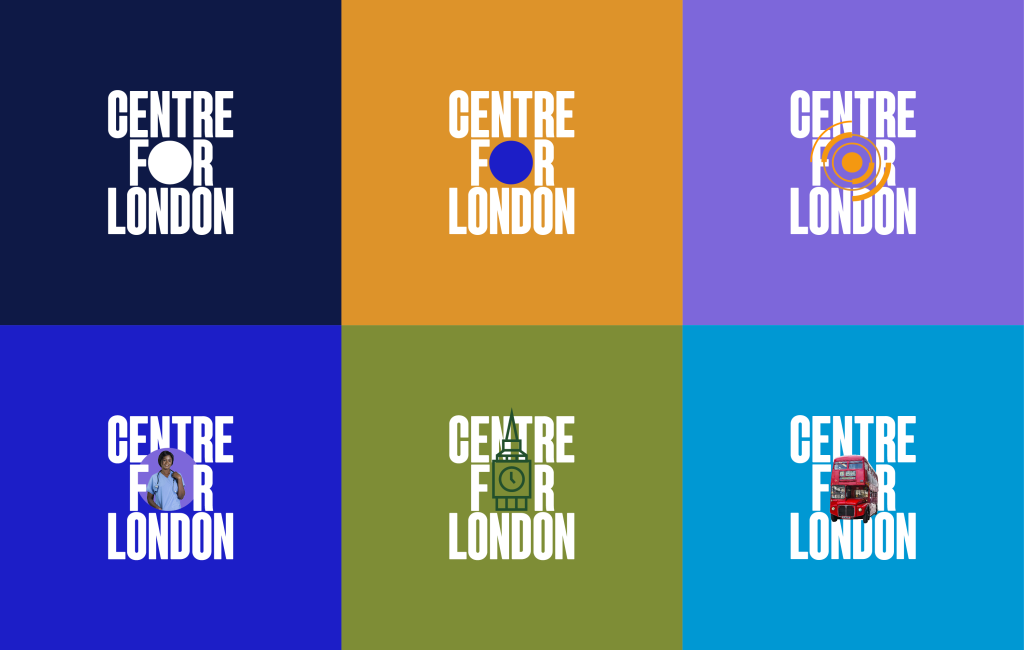
Challenges in Visual Identity Creation
The question I get asked most often is “where do you get your inspiration from?”. I find I can tell better visual stories the more I understand my client, their mission and their reason for striving. Increasing the time I spend discovering the intricacies of their business, influences how well-matched my design solutions are.
With Centre for London, my challenge was to communicate complex and varied London issues (from the decarbonization of its transport network to the ongoing housing crisis) without using stereotypical images of the capital, and instead applying a more human-centered approach. Another consideration was to ensure that the visual identity could flex to accommodate new topics and issues as London continues to grow.
Involving their in-house designer Klara in the process, meant I had someone sharing a deeper understanding of the everyday use of the identity with me. Every visual identity needs consistency across all the materials, for continued recognition. With a complex system and levels of hierarchy, it’s invaluable to have inside knowledge of the specific needs of each individual element – who uses it, who is it for and why. In this project, we developed a ‘volume’ where guidelines and templates show how documents can be designed on the scale of functional to expressive, improving efficiency and cohesiveness. The dynamic approach allowed us to leave room for future adaptation when the think tank evolves side by side with London. Topics are brought further alive by using textures, close-up patterns taken from the city’s streets, infrastructure and homes, adding detail and narrative to its communications.
The approach was enhanced by the new flexible logo. This sees the letter O in ‘for’ become a showpiece for illustrating the multifaceted nature of their work, and the range of policy issues they cover. By default applied in the logo as a circular dot that conveys the think tank as the center of the capital, the dot is also an expressive space, which can change color and shape depending on the context of the application.
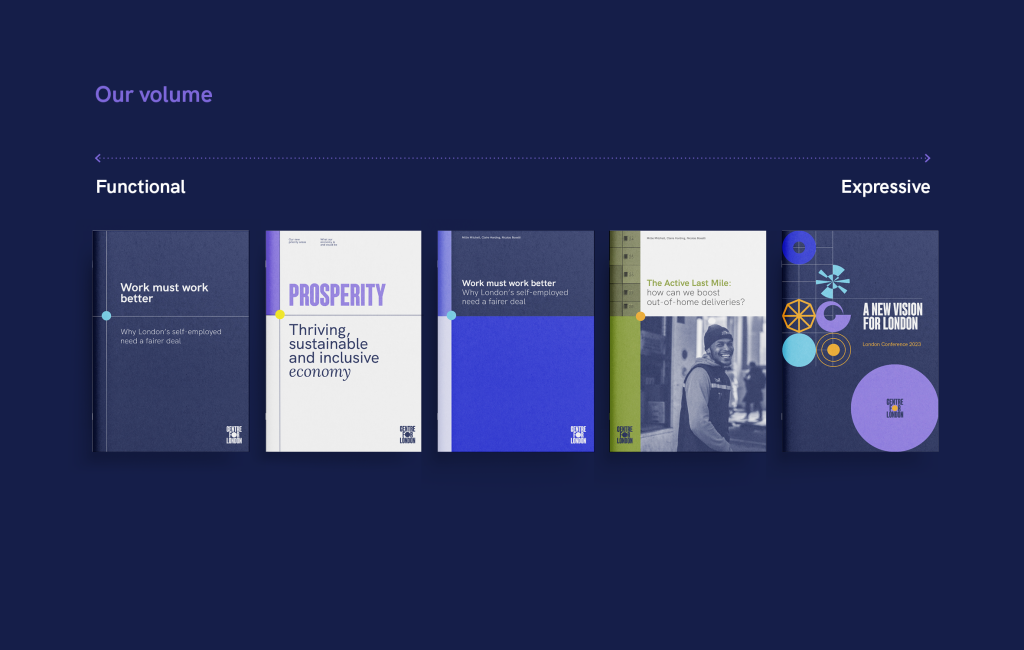
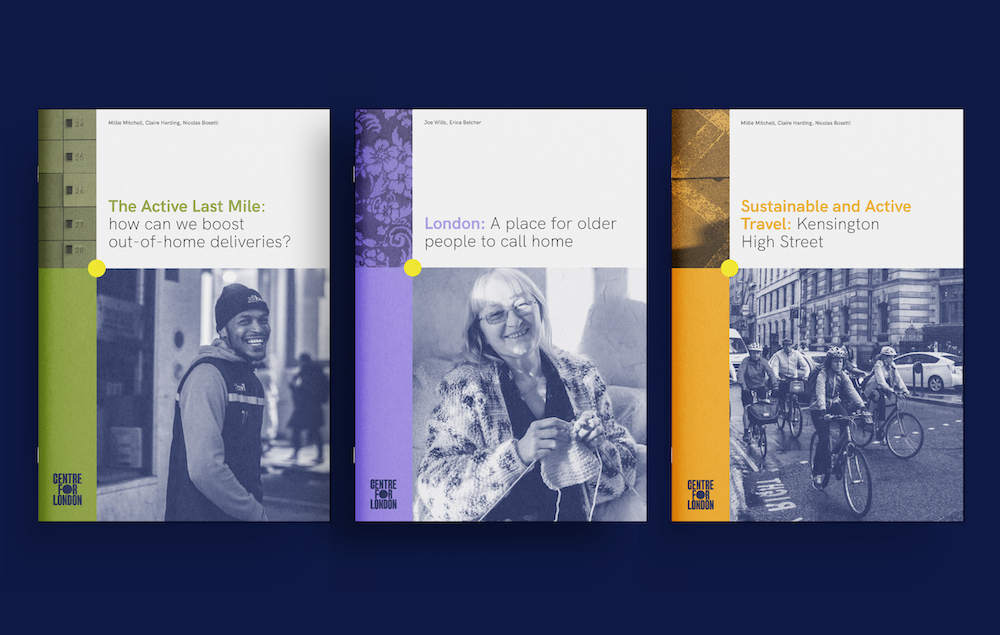
How Collaboration Fosters Creative Well-being
In the Ulster University research I mentioned earlier, they found specific characteristics of the creative sector work environment that are likely to contribute to developing mental health problems and burnout. These include the pressure to achieve high standards (both externally and internally) and a perceived lack of recognition and value for our work.
Collaborating closely with in-house designers and learning more about your client not only allows you to deliver better results but also helps to cultivate trust and foster long-term relationships. The better you understand your client’s goals, challenges and preferences, the better you can tailor your approach to meet their everyday specific needs beyond an identity that looks exciting as mock-up visuals in the guidelines. Engaging in learning is motivational and helps you stay energized and inspired in your work.
From the in-house designer’s perspective, it is important to have ownership of the visual identity they will be implementing daily, as it impacts the sense of creative fulfillment, and will positively impact the overall success of the project, particularly in the longer run.
Klara Blazek, Senior Designer at Centre for London, said:
“I am grateful that as an in-house designer, I had the opportunity to be involved in the full rebranding process, starting from conceptual ideation. I felt valued in every phase and provided Emmi with extra insight into what Centre for London’s needs were and how the brand would ultimately function. This allowed us to create a visual identity that would not falter when practically applied. Because of Emmi’s mentorship and assurance that my ideas would be incorporated, I am confident in the brand and my ability to successfully work with it in the future.”
Working together towards a common goal can create a sense of camaraderie and belonging, giving your work purpose. There are multiple studies on how collaboration improves creativity, by enhancing the flow of information and inspiration, giving an opportunity to build on each other’s ideas. Diversity of perspectives can lead to novel solutions and foster complex problem-solving.
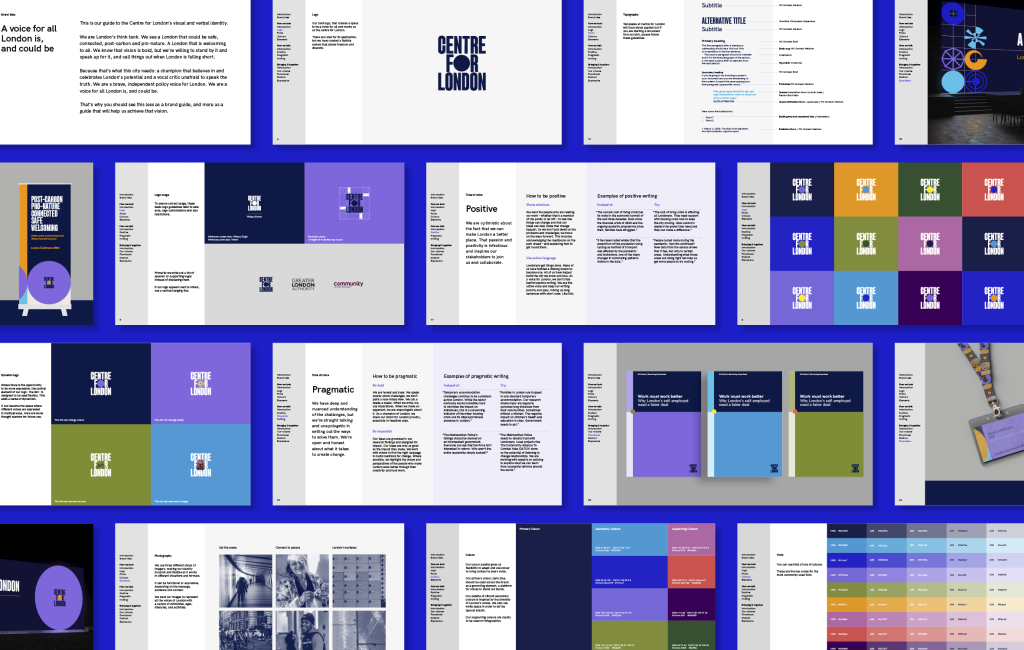
Best Practices for Design Collaboration
Knowledge sharing, inspiration and a feeling of ownership, contribute to the overall success of the project and the well-being of the designers involved.
Some best practices to keep in mind during the process, for both external and in-house designers:
- Have an introductory call to see if you are compatible and have creative chemistry. For you both to learn, there needs to be a willingness and a connection to build on.
- Set clear expectations. Define areas for growth and provide a plan for how this will be addressed.
- Ask and provide feedback as you go along.
- Share knowledge, inspiration, influences and reasons for doing things a certain way.
- Foster a positive and supportive collaboration that encourages creativity. You may not share the same physical space but can attend workshops, talks and other events together.
Nick Bowes, Chief Executive at Centre for London, said:
“I’m delighted with our new branding that is both professional and eye-catching and is designed to speak to and on behalf of the entire city. With this, the Centre for London offers a refreshed visual identity that will support our work to make the city a better place to live, work and visit.”
* * *
Emmi will give a talk at the design conference Design Matters Tokyo 23, which will take place in Tokyo & Online, on Jun 2-3, 2023. The talk, titled ‘From Burnout to Resilience: Building a Sustainable Creative Practice’, will bring us on a journey of discovery through her Creative Ecosystem model, a holistic approach to nurturing creativity grounded in scientific studies and focused on building a sustainable creative practice that embraces curiosity and design thinking. Get your ticket here!
If you want to learn more and connect with Emmi, follow her on LinkedIn, Instagram or find out more about the Centre for London project here.


